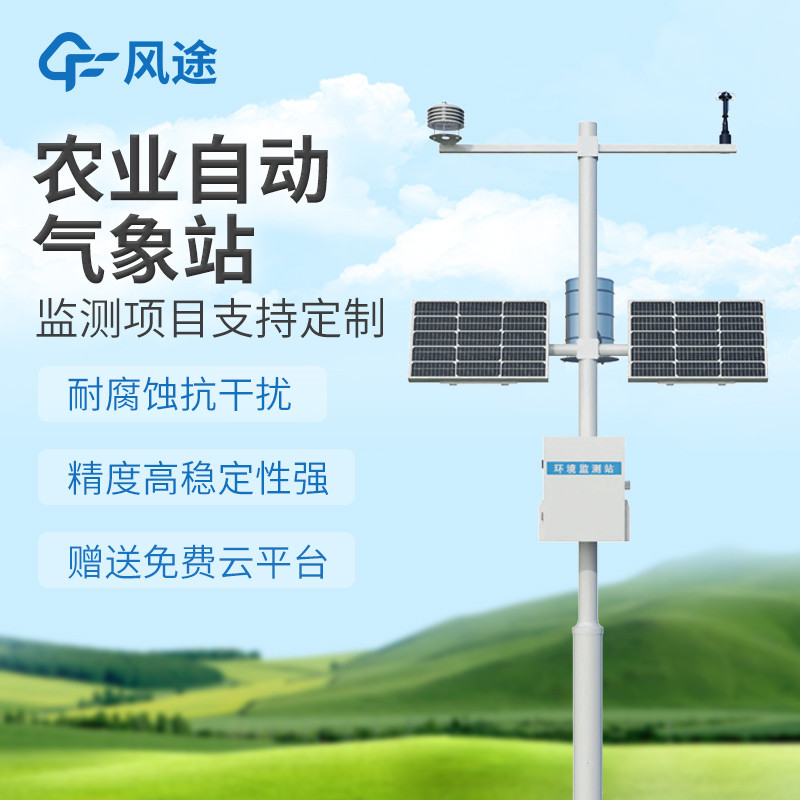Tianyi Sensor IOT Technology Co., Ltd
Sales Manager:Ms. Emily Wang
Cel,Whatsapp,Wechat:+86 15898932201
Email:info@fengtutec.com
Add:No. 155 Optoelectronic Industry Accelerator, Gaoxin District, Weifang, Shandong, China

Sales Manager:Ms. Emily Wang
Cel,Whatsapp,Wechat:+86 15898932201
Email:info@fengtutec.com
Add:No. 155 Optoelectronic Industry Accelerator, Gaoxin District, Weifang, Shandong, China
time:2025-04-25 10:14:22 source:Weather Station viewed:195 time
Facility agriculture refers to an agricultural form that utilizes new production equipment, modern agricultural engineering technologies, and management techniques to regulate environmental parameter factors such as temperature, light, water, soil, air, and fertilizer for the growth of plants like vegetables, fruit trees, and flowers within protective facilities such as greenhouses and plastic greenhouses, enabling efficient plant production. Common types of facility agriculture include greenhouses, plastic greenhouses, artificial climate chambers, plant factories, and soilless cultivation. Although it can, to a certain extent, break free from the constraints of the natural environment, factors such as yield, quality, and planting structure are still restricted by natural climate resources. Disastrous weather conditions such as typhoons, blizzards, strong winds, and heavy rainfall may still have an impact on it. Therefore, Agricultural Weather Stations have become common tools in facility agricultural production.
Agricultural Weather Stations are a set of meteorological monitoring systems specifically designed for the environment of facility agriculture. They integrate a variety of high-precision sensors and can monitor meteorological elements such as air temperature and humidity, illuminance, wind speed and direction, and soil temperature and humidity in real time, providing a scientific basis for agricultural production. Through this data, farmers can promptly understand the environmental conditions within the facilities and take corresponding management measures to create the most suitable environment for crop growth and improve crop yield and quality. Agricultural Weather Stations can also issue warnings before the arrival of extreme weather, helping farmers make preventive preparations in advance and reducing losses.
The FT-NQ8 Agricultural Weather Stations are a high-precision meteorological observation device that is highly integrated, has low power consumption, and is convenient for rapid installation and monitoring in the wild. It is mainly composed of the following five parts:
Meteorological sensors can collect a variety of meteorological elements, providing raw data for the system.
The data collector has a static power consumption of less than 50uA. It efficiently collects and preliminarily processes the data from the sensors, supports the expansion of Modbus 485 sensors, and has a strong data collection capability.
The solar power supply system is equipped with MPPT (Maximum Power Point Tracking) for solar charging management. Lead-acid batteries of specifications such as 30W 20AH, 50W 20AH, or 100W 100AH can be selected to achieve efficient and stable power supply, ensuring the continuous operation of the equipment.
The stand bracket is made of three-meter carbon steel material and consists of two sections connected by screw threads. It stably supports the equipment and can adapt to different field environments.
The cloud platform has comprehensive functions. It supports multi-account and multi-device logins, can display and analyze historical data in real time, and has functions such as data curve analysis, form export, data forwarding, and post-processing. It can also send alarm messages via SMS and set thresholds, enabling users to grasp meteorological information anytime and anywhere and respond to abnormal situations in a timely manner.
The data upload interval of this device can be flexibly adjusted from 1 minute to 1000 minutes to meet different monitoring frequency requirements. Its protective box is made of ABS material, which is corrosion-resistant and oxidation-resistant, and has a waterproof rating of IP66, effectively resisting the erosion of harsh environments.

The Portable IV Curve Tester FT-IV2 is an instrument specifically designed for outdoor photovoltaic testing, capable of quickly measuring the current-voltage (I-V) characteristic curves of photovoltaic modules or strings.The tester features a maximum voltage measurement range of 1500V and a current...
An air quality monitoring station is an unmanned environmental monitoring device that integrates data collection, storage, transmission, and management. Its core advantage lies in its ability to conduct high-precision, real-time monitoring of various pollutants. The system can provide data on parame...
In daily life, whenever we easily press the switch and the lights turn on instantly and the electrical appliances operate smoothly, few people will think deeply that behind this seemingly ordinary power supply, there is actually a huge and complex technological system operating stably. Among the man...
In transportation, high-speed railways and road transport are significantly affected by meteorological conditions. In severe weather such as heavy rain, snowstorms, heavy fog, or strong winds, road surfaces become slippery, visibility drops sharply, and high-speed railway tracks may even freeze. All...